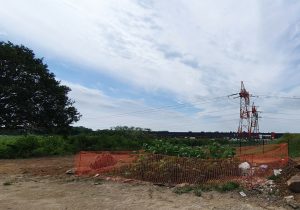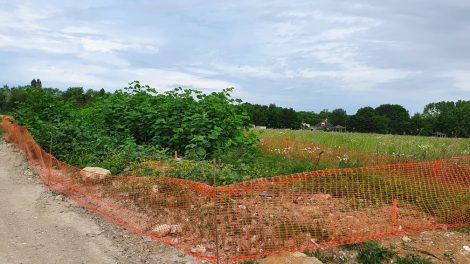Aurélie Vedel, ECT’s manager of developments and green spaces, describes in this article her plan for the fight against invasive species.
A global issue for biodiversity, a local fight for ECT
Invasive species are a well-known threat to natural environments and are the fourth most serious factor in the loss of global biodiversity. Their presence has dramatic negative consequences for agriculture, fish production, ecology and health. In March 2021, researchers at CNRS published a summary of the economic costs of invasive species around the world. Between 1870 and 2017, they cost 1,288 billion US dollars.
Derelict sites tend to encourage invasive species
The initially derelict state of most sites where ECT works helps invasive species get established and even proliferate. In our work, the development of the site and restoration of its natural habitats commits us to taking on the struggle against invasive species as a priority goal in our promotion of biodiversity.
ECT’s work involves land. Taking action leads ECT’s project teams – Design, Green Spaces and Operations – to innovate and transform their working practices. Because of the frequency with which three invasive species are found on our development projects, ECT has made them priority targets:
- Asiatic knotweeds, Reynoutria japonica and Reynoutria sachalinensis
- Galega or Goats’ Rue,Galega officinalis
- The butterfly bush or buddleia, Buddleja davidii
A five-step plan to fight invasive species
On the sites, the teams work together in a joint operation between the various departments concerned to implement a definitive action plan.
- Identifying the invasive species present on the site, mapping where they’re found, and using protection nets to identify the zones to be dealt with.
- Defining the action strategy depending which species have been identified, the context of the site, its relief, the existing vegetation and the purpose of the development.
- Neutralising the invasive species by pulling them out, cutting them off at the base and bagging them, groundworks and deep burial.
- Favouring competitive species to contain the growththat can’t be removed (especially those that compete for light) by planting fast-growing native species such as alder or hazel and, on certain banks, promoting brambles. Finally, by seeding open spaces to avoid all new germinations.
- Monitoring the arrival of invasive speciesby training in-house teams – the Green Spaces team but also the Operations teams who are present on site every day.

Demarcation of Japanese knotweed zones on the ECT site in Boissy l’Aillerie (95)
Action for biodiversity
See all ESG (environment, social, governance) for ECT
These initiatives are fully in line with the National Plan for Combatting Invasive Species implemented by the Office Français de la Biodiversité. They are the subject of regular feedback both internally and with ecologists, communities and local authorities involved in our projects. This struggle against invasive species is part of our biodiversity priorities list. And it’s at the core or our work with the association Humanité & Biodiversité

